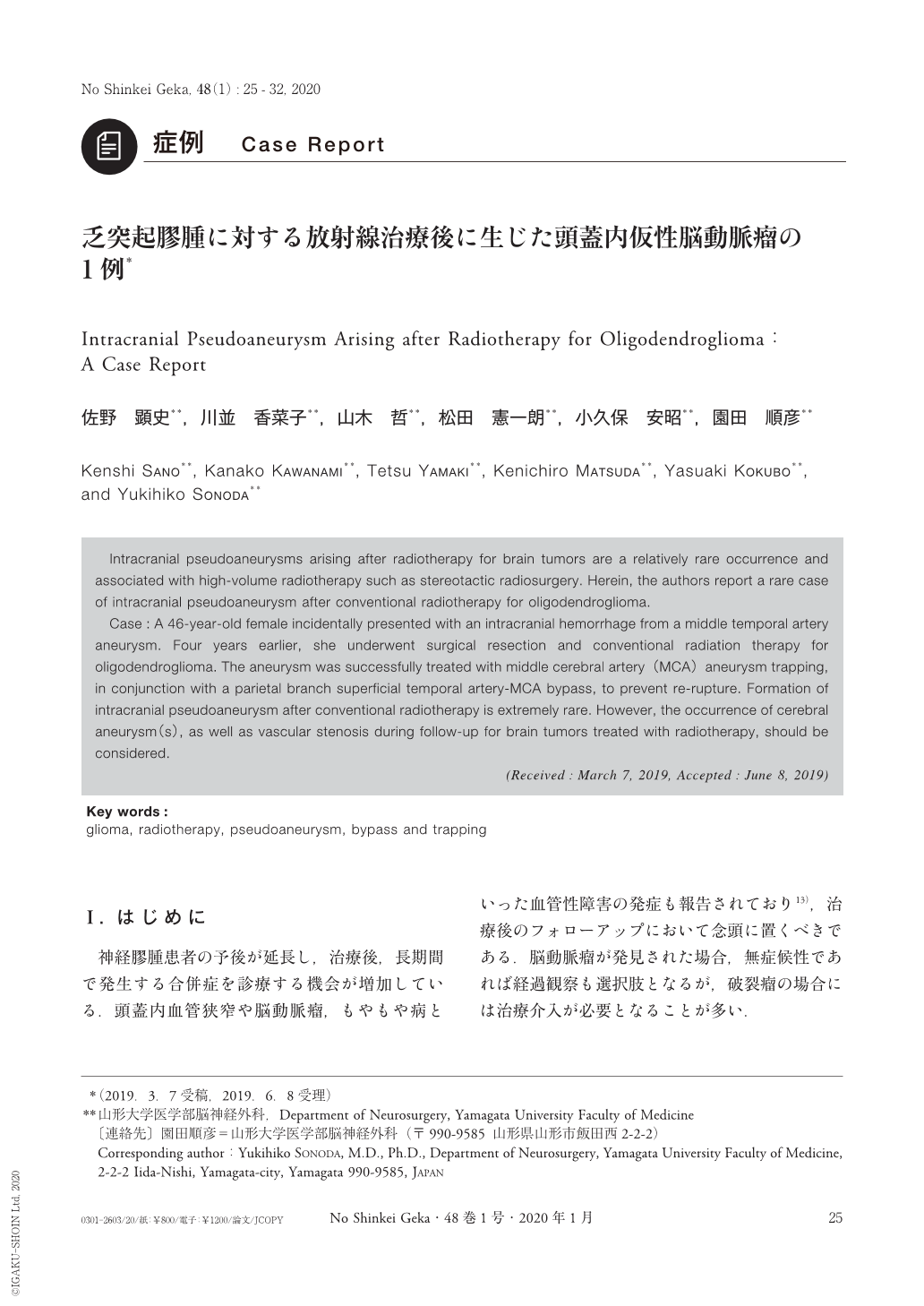Japanese
English
- 有料閲覧
- Abstract 文献概要
- 1ページ目 Look Inside
- 参考文献 Reference
Ⅰ.はじめに
神経膠腫患者の予後が延長し,治療後,長期間で発生する合併症を診療する機会が増加している.頭蓋内血管狭窄や脳動脈瘤,もやもや病といった血管性障害の発症も報告されており13),治療後のフォローアップにおいて念頭に置くべきである.脳動脈瘤が発見された場合,無症候性であれば経過観察も選択肢となるが,破裂瘤の場合には治療介入が必要となることが多い.
今回,われわれは,神経膠腫の初期治療後,フォローアップにおけるMRIにて脳動脈瘤を診断し,バイパス術を併用したトラッピング術を行い,良好な経過を得た頭蓋内仮性脳動脈瘤の1例を経験した.放射線治療後の頭蓋内脳動脈瘤について,文献的考察を加えて報告する.
Intracranial pseudoaneurysms arising after radiotherapy for brain tumors are a relatively rare occurrence and associated with high-volume radiotherapy such as stereotactic radiosurgery. Herein, the authors report a rare case of intracranial pseudoaneurysm after conventional radiotherapy for oligodendroglioma.
Case:A 46-year-old female incidentally presented with an intracranial hemorrhage from a middle temporal artery aneurysm. Four years earlier, she underwent surgical resection and conventional radiation therapy for oligodendroglioma. The aneurysm was successfully treated with middle cerebral artery(MCA)aneurysm trapping, in conjunction with a parietal branch superficial temporal artery-MCA bypass, to prevent re-rupture. Formation of intracranial pseudoaneurysm after conventional radiotherapy is extremely rare. However, the occurrence of cerebral aneurysm(s), as well as vascular stenosis during follow-up for brain tumors treated with radiotherapy, should be considered.

Copyright © 2020, Igaku-Shoin Ltd. All rights reserved.


